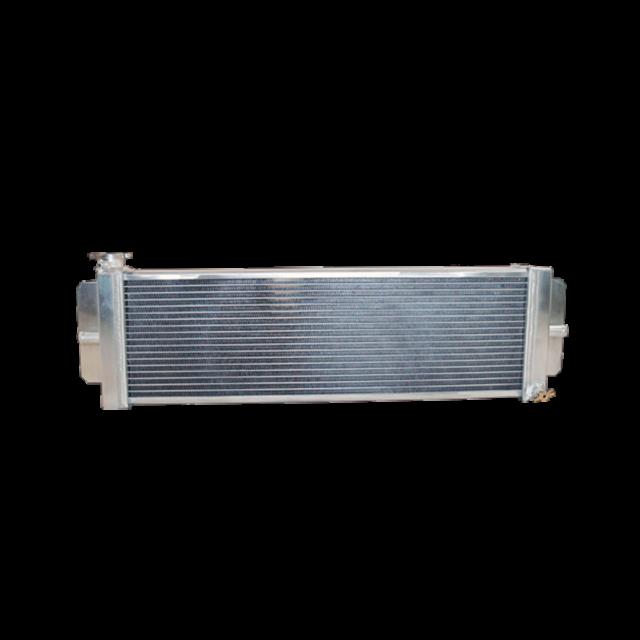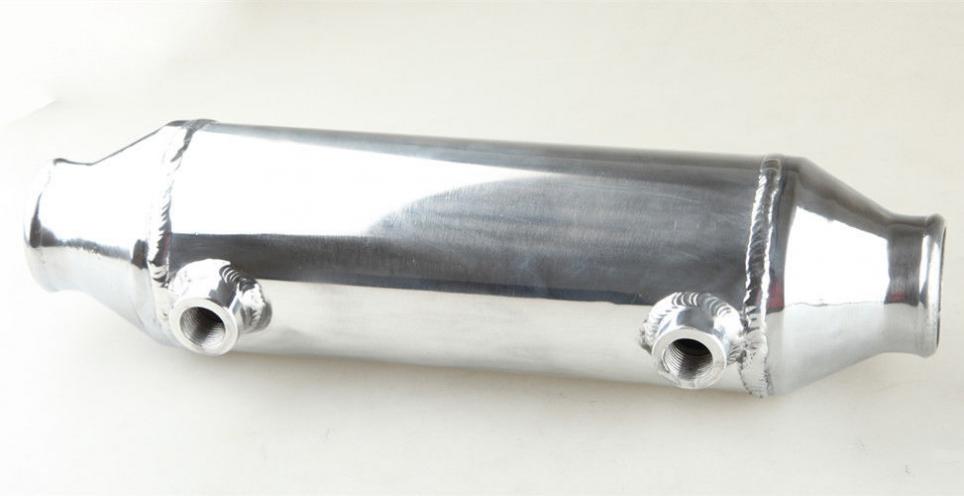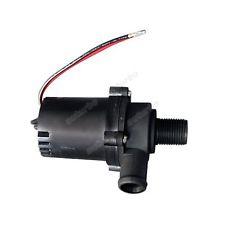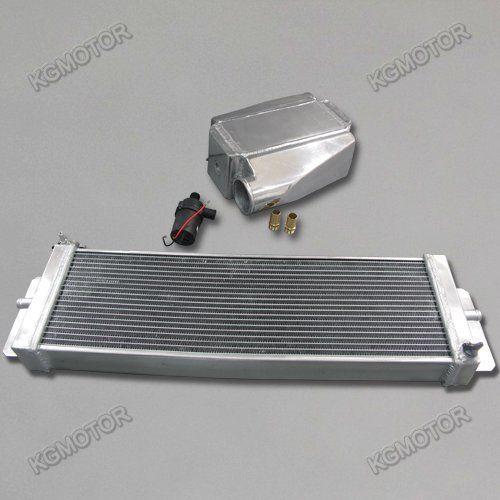Ive been toying with different intercooling ideas for the Polo.
1. water to air - use an audi S3 passenger side entry inlet mani (got one coming) and position a water to air core directly between the turbo outlet and the mani eg above where the battery and airbox normally sit. Length of induction piping would be about 1m max. Things to consider are are reservoir positioning (from a heat soak point of view), whether you'd even need a reservoir, and weight of the whole system.
2. air to air top mount- in the same position run an air to air core with a Mazda 3/wrx style scoop feeding it and ducting out to the back edge of the engine bay undertray. Works fine for STi's, it would be a straight shot into the S3 inlet but would be lighter than 1. Could very easily rig up a water spray for it too.
3. air to air FMIC - this is the one that I'm really looking at as a way to run air to air (reliable/light) but with the shortest possible inlet tract (like 1. and 2.)



So looking at third pic you can see that the compressor exit an be brought out and shoot straight to the front of the car. I reckon by looking at my car and the pics of Louis's when it was apart, that if you remove material above the radiator where the CAI normally is (where Louis has the feed for his K&N) that you can continue that pipe straight out the front and then drop it vertically into the top of a FMIC. I don't think there is a more direct way to get into one.



So the type of intercooler that would do this would be an EVO's. First pic are two Evo ones and their aftermarket counterparts in the other 2 pics. But if you take one of these and flip it left to right, the intercooler inlet will sit directly below where we can get the compressor exit to come out above the radiator. That will then put the Evo's IC exit in the perfect position to run existing SEAT/Forge piping up to the factory inlet. The normal SEAT/Forge inlet tract run would be about 4+m I reckon and in comparison this would allow you to run a factory core (or readily available aftermarket), a single pass IC and cut the inlet length by nearly half.
I'm actually intrigued though if an underbonnet air to air could be made to work. With proper ducting and heat insulation/shielding/partitioning it'd be a light, lagless and reliable/simple way of doing things and would have the added bonus of leaving the radiator unobscured which could only help with water temps too.
1. water to air - use an audi S3 passenger side entry inlet mani (got one coming) and position a water to air core directly between the turbo outlet and the mani eg above where the battery and airbox normally sit. Length of induction piping would be about 1m max. Things to consider are are reservoir positioning (from a heat soak point of view), whether you'd even need a reservoir, and weight of the whole system.
2. air to air top mount- in the same position run an air to air core with a Mazda 3/wrx style scoop feeding it and ducting out to the back edge of the engine bay undertray. Works fine for STi's, it would be a straight shot into the S3 inlet but would be lighter than 1. Could very easily rig up a water spray for it too.
3. air to air FMIC - this is the one that I'm really looking at as a way to run air to air (reliable/light) but with the shortest possible inlet tract (like 1. and 2.)
So looking at third pic you can see that the compressor exit an be brought out and shoot straight to the front of the car. I reckon by looking at my car and the pics of Louis's when it was apart, that if you remove material above the radiator where the CAI normally is (where Louis has the feed for his K&N) that you can continue that pipe straight out the front and then drop it vertically into the top of a FMIC. I don't think there is a more direct way to get into one.
So the type of intercooler that would do this would be an EVO's. First pic are two Evo ones and their aftermarket counterparts in the other 2 pics. But if you take one of these and flip it left to right, the intercooler inlet will sit directly below where we can get the compressor exit to come out above the radiator. That will then put the Evo's IC exit in the perfect position to run existing SEAT/Forge piping up to the factory inlet. The normal SEAT/Forge inlet tract run would be about 4+m I reckon and in comparison this would allow you to run a factory core (or readily available aftermarket), a single pass IC and cut the inlet length by nearly half.
I'm actually intrigued though if an underbonnet air to air could be made to work. With proper ducting and heat insulation/shielding/partitioning it'd be a light, lagless and reliable/simple way of doing things and would have the added bonus of leaving the radiator unobscured which could only help with water temps too.





Comment